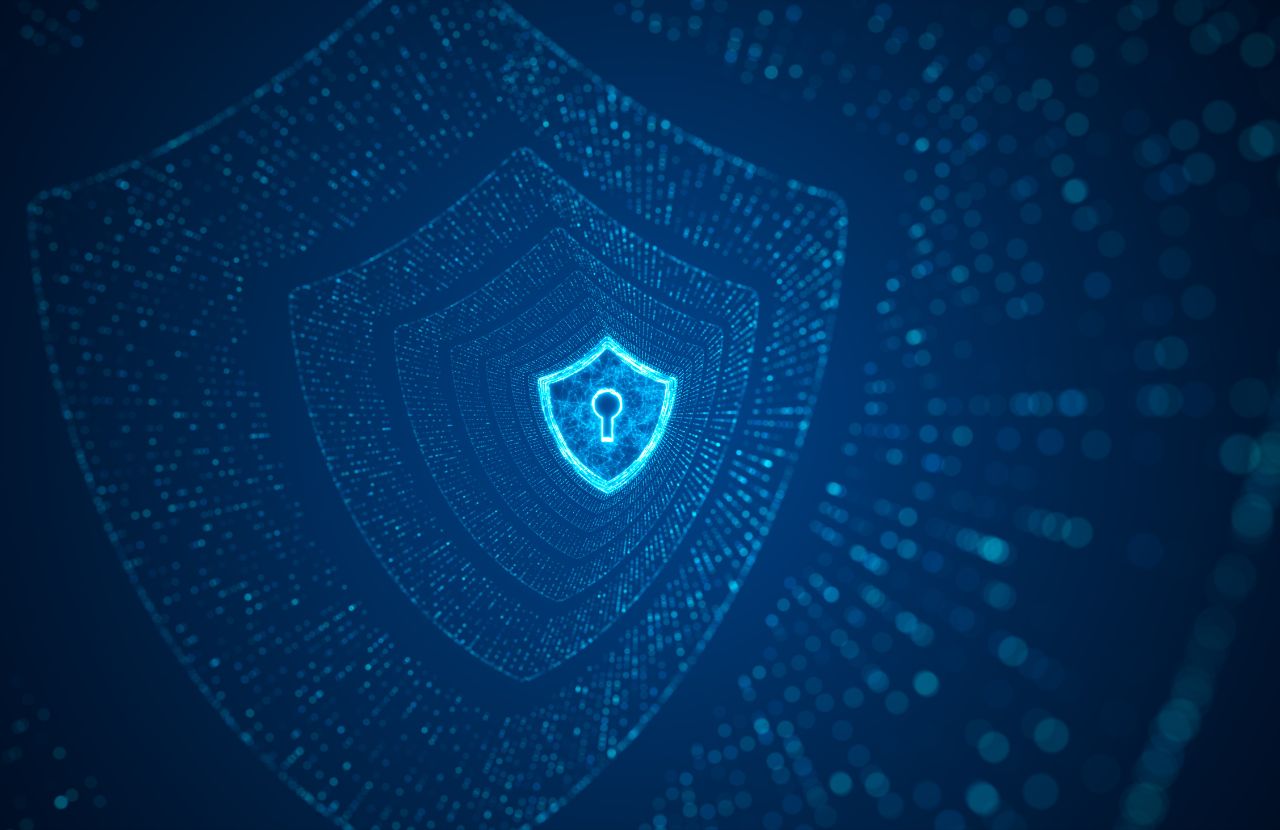
The cyber security landscape in the UK is increasingly complex, driven by rapid technological advancements and sophisticated attack methods.
Here we share the top 10 cyber security threats your organisation needs to be aware of today.
What is a cyber threat?
A cyber threat is a malicious attempt to damage or disrupt a computer network, system, or digital information. These threats can originate from various sources, including hackers, cybercriminals, state-sponsored actors, or even insiders with access to sensitive information.
The intent behind these actions can vary from financial gain and espionage to causing widespread disruption or damage.
The impact of cybersecurity threats can be significant, affecting individuals, businesses, and governments. Personal data theft, financial loss, operational downtime, and reputational damage are common consequences.
As the digital landscape continues to evolve, the sophistication and frequency of cyber threats are also increasing, making robust cyber security measures essential.
Top 10 cyber security threats 2024
In 2023, half of all businesses in the UK and over a third of charities suffered cyber security attacks, according to government cyber security statistics. Here are the top 10 cyber security threats to be aware of in 2024.
Ransomware
Ransomware remains a significant threat due to its evolving nature.
Attackers are now employing ransomware-as-a-service (RaaS), where they offer ransomware tools and services to other criminals. This model increases the accessibility and distribution of ransomware, leading to more frequent and diverse attacks.
For instance, some ransomware attacks now involve triple or quadruple extortion schemes, combining data encryption with data theft and threats of distributed denial-of-service (DDoS) attacks if the ransom is not paid.
In June 2024, the UK experienced a significant ransomware attack targeting Synnovis, a pathology laboratory serving several NHS organisations in Southeast London. The attack led to substantial disruptions in medical services, affecting blood tests crucial for various treatments. As a result, over 3,396 outpatient appointments and 1,255 elective procedures were postponed across Guy’s and St Thomas’ NHS Foundation Trust and King’s College Hospital NHS Foundation Trust.
The ongoing impact of this attack has led to the diversion of organs for transplants and the postponement of some cancer treatments and elective surgeries.
Cloud-based threats
With the growing adoption of cloud services, cyber security risks associated with cloud environments have surged. Misconfigured cloud services, unsecured APIs, and cloud-specific malware are significant issues. Attackers exploit these vulnerabilities to gain access to sensitive data or disrupt services.
The Electoral Commission experienced a significant cloud-based cyber-attack in 2023. The attack exposed the personal details of approximately 40 million people who registered to vote between 2014 and 2022.
The election attack demonstrates critical vulnerabilities in cloud service configurations and access controls, underscoring the need for robust security measures to prevent unauthorised access and data theft.
Identity-based attacks
Identity-based attacks, including phishing, social engineering, and SIM-swapping, are on the rise. Attackers often use stolen credentials to bypass multi-factor authentication (MFA) and gain unauthorised access to systems. These methods have become more sophisticated with the help of generative AI.
An identity-based cyber-attack on Barclays Bank exposed vulnerabilities within the banking sector. Attackers used a combination of phishing and credential stuffing techniques to gain unauthorised access to customer accounts and internal systems.
Barclays faced severe financial losses, regulatory penalties, and a significant blow to its reputation. In response, Barclays enhanced its security infrastructure by adopting zero-trust principles, deploying advanced threat detection systems, and increasing investments in cyber security training for employees.
5G vulnerabilities
Attacks on 5G infrastructure, such as base stations and edge servers, can disrupt services and compromise data. The increased connectivity of devices under 5G also expands the potential attack surface.
Supply chain attacks
Supply chain attacks target certain people in an organisation, using them as a conduit to infiltrate multiple victims. These attacks have become more frequent and sophisticated, affecting a wide range of industries.
One of the biggest cybersecurity attacks happened against an Australian company, DP World in 2023. The attack affected nearly 40% of Australia’s freight trade and a significant volume of personal data was compromised. The perpetrators and motives behind the attack are unknown, although the Russian hacker group LockBit 3.0 is suspected.
Internet of Things (IoT) vulnerabilities
The proliferation of Internet of Things (IoT) devices presents significant cyber security risks. Many IoT devices (like fridges and televisions that are connected to the internet) lack robust security features, making them susceptible to attacks like denial-of-service (DDoS) attacks and data breaches.
The Mirai botnet attack in 2016 exploited IoT devices to launch a massive DDoS attack, disrupting major internet services.
State-sponsored attacks
Nation-state actors are increasingly engaging in cybersecurity attacks to achieve political and strategic goals. These attacks often target critical infrastructure, steal sensitive information, and disrupt services.
North Korean cyber-attacks on financial institutions are a growing concern due to their increasing sophistication and significant impact. These attacks are primarily orchestrated by state-sponsored groups such as the Lazarus Group (APT38) which are known for their financial motivations and destructive capabilities.
AI-enhanced threats
Cybercriminals are increasingly leveraging artificial intelligence (AI) to enhance the sophistication and effectiveness of their attacks.
Phishing attacks have become significantly more convincing with the help of AI. Cybercriminals use AI to analyse vast amounts of data from social media and other sources to craft highly personalised and convincing phishing emails. AI can also generate realistic, context-aware messages that are much harder for traditional security measures to detect.
For example, AI can simulate writing styles and predict which types of messages are most likely to elicit responses from specific individuals. This level of personalisation increases the likelihood of success for phishing attacks, making them more dangerous.
Social engineering
Social engineering attacks are becoming more targeted and realistic, often incorporating AI to craft convincing messages that trick victims into divulging sensitive information (see above).
The 2020 Twitter hack is a notable example of the effectiveness of social engineering tactics. Attackers used social engineering to trick Twitter employees into providing access to internal systems. The attackers posed as Twitter IT staff and convinced employees to disclose their login credentials. This allowed the attackers to gain control of high-profile accounts, including those of prominent figures like Elon Musk, Bill Gates, and Barack Obama.
The hackers then used these accounts to post fraudulent messages promoting a cryptocurrency scam, resulting in significant financial losses for victims.
Shortage of cyber security professionals
The ongoing shortage of skilled cyber security professionals poses a significant challenge for organisations aiming to defend against increasingly complex security risks. This skills gap hinders the implementation and management of robust security measures, leaving many organisations vulnerable to attacks.
There is a global shortage of nearly 4 million cyber security professionals. This shortage is exacerbated by the rapid evolution of cyber threats and the increasing complexity of IT environments.
How can you protect your organisation from IT threats?
To mitigate cyber security risks, organisations need to:
- Implement robust security protocols for cloud services, continuous threat exposure management, and enhanced identity and access management.
- Upskill cybersecurity professionals to keep pace with evolving threats.
- Ensure employees and managers are aware of current cyber security threats and can identify phishing attempts. At Praxis42, we offer cyber security awareness training for employees and cyber security training for managers.
- Utilise AI for threat detection and response and adopt zero-trust security models.
- Work closely with government and law enforcement agencies to stay informed about the latest threats and mitigation strategies.
For more detailed guidance about staying vigilant and adapting to the dynamic cyber security landscape, please read our article, Secure Remote Access – Easy Guide for Businesses.
Please also listen to our webinar How to Implement a Successful Cyber Security Plan. The webinar features guest speaker Daryl Flack, Co-Founder and CISO at BlockPhish. Daryl is a vastly experienced cyber, technology and business leader who offers invaluable insights.

Tom Paxman
Managing Director (Digital)
